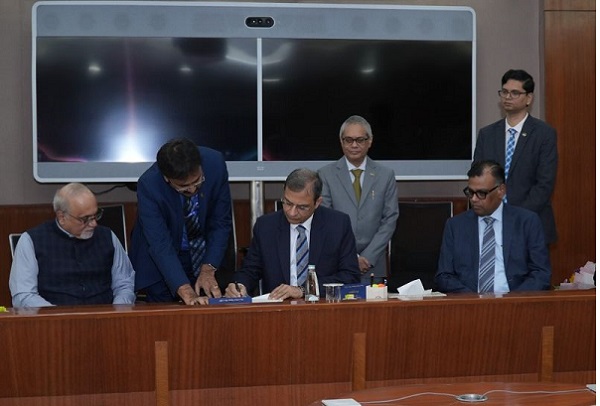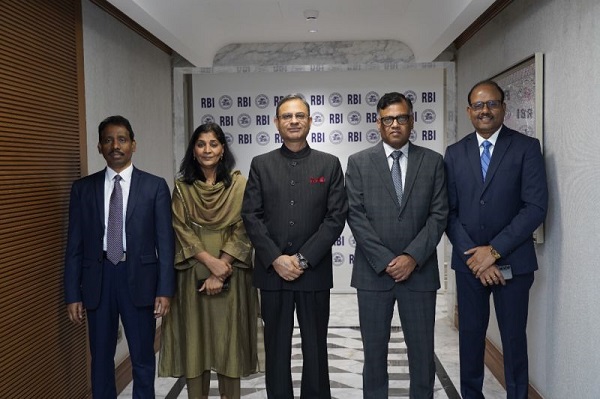.png)
Early Monsoon Tempers Output, But Macro Signals Turn Upbeat
The early onset of the monsoon has brightened agricultural prospects and improved the inflation outlook, even as it appears to have weighed on industrial growth. Other sectors have shown resilience, and early indicators from June point to a recovery.


Groupthink is the House View of BasisPoint’s in-house columnists.
June 27, 2025 at 3:01 PM IST
The early arrival of the southwest monsoon, vital to India’s farm and rural economy, weighed on industrial activity in May, as cooler temperatures reduced electricity demand and dragged down output. However, momentum in services and other sectors remained resilient, and early signs from June point to a modest recovery. Falling inflation and buoyant government revenues also provided comfort amid persistent global headwinds.
Industrial Output
Electricity generation, the largest component of the Index of Industrial Production, saw its sharpest fall since the peak of the COVID crisis in 2020-21, driven by reduced cooling demand after early monsoon rains. This setback is expected to contribute significantly to overall factory output in May. Core sector growth, which makes up 40.3% of the IIP, slowed to a nine-month low of 0.7% in May, largely due to the decline in power generation.
Signs of softening consumption were also visible in the automobile sector. Passenger vehicle sales grew just 0.8% from a year earlier, the slowest in eight months. Two-wheeler sales rose 2.2%, but May dispatches of 1.66 million units remained still 4% below May 2019 levels. Tractor sales rose 9.1%, though largely due to a low base effect rather than robust demand.
Trade Woes Persist
External trade remained a drag. Merchandise exports declined 2.2% to $38.73 billion in May, while imports fell 1.7% to $60.61 billion, narrowing the trade deficit. Exports to the US surged 21.8% to $17.25 billion in April-May, likely in anticipation of reciprocal tariffs following the 90-day pause in US tariff enforcement. Imports from China rose 24.2% to $20.22 billion, possibly reflecting China’s efforts to diversify its exports amid US tariff threats.
Buoyant Revenues
Government finances improved in May with the Reserve Bank of India transferring a record ₹2.69 trillion as surplus, up from ₹2.11 trillion a year earlier. Tax collections remained strong, with goods and services tax revenue rising 16.4% year-on-year to ₹2.01 trillion, the fastest pace in 31 months. E-way bill generation, a proxy for domestic trade, rose 18.9% to 122.65 million, the second highest monthly tally on record, indicating likely robust GST inflows in June as well.
However, the first instalment of advance tax for 2025-26 fell short of expectations, reflecting softer corporate performance. Net direct tax collections as of June 19 fell 1.4% year-on-year to ₹4.59 trillion, primarily due to a 58% surge in refunds.
Purchasing Managers’ Index (PMI) data was subdued in May, but flash readings for June indicate a rebound. Flash manufacturing PMI rose to a 14-month high of 58.4, while services PMI hit a 10-month high of 60.7. The composite PMI climbed to 61.0, its strongest level in 14 months, with all three indices remaining well above their long-term averages.
Inflation Outlook Improves
Inflation brought welcome relief. Retail inflation eased to a 74-month low of 2.82% in May, driven by a sharp moderation in food prices. This supports the Reserve Bank of India’s recent front-loaded rate cuts. The southwest monsoon has been above normal so far. The cumulative rainfall stood at 156.4 mm as of June 27, 10% above the normal for the period. Improved rainfall has boosted kharif sowing, which reached 13.78 million hectares as of June 20, up 10% from the previous year. This bodes well for food supply and inflation in the coming months.
Global factors also favoured the inflation outlook. The recent ceasefire between Israel and Iran has eased global crude oil prices, while a favourable base effect through October strengthens the outlook for continued low inflation.
Improved geopolitical conditions have lifted investor sentiment. Equity markets rallied, with the benchmark Nifty 50 closing at a near nine-month high on June 26, up 8.6% so far in 2025-2026. Despite surplus liquidity and recent rate cuts, government bond yields have firmed as the RBI signalled that no further easing is on the cards. Nonetheless, financial conditions remain broadly accommodative, supporting growth prospects into the second half of the year



